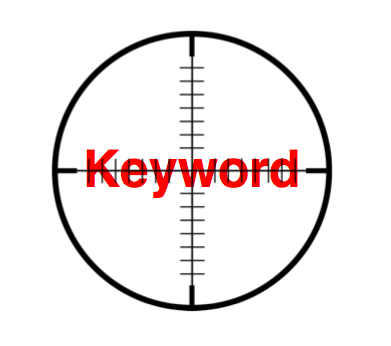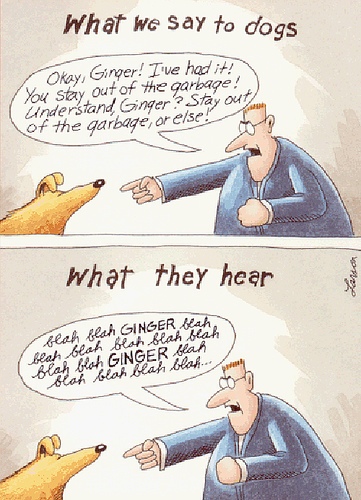Search Engine Optimization (SEO) is filled with passionate debate. One such debate is the validity of keyword density as an SEO strategy.

Keyword Density is Dead
The well respected SEOmoz says keyword density is a myth.
A complete myth as an algorithmic component, keyword density nonetheless pervades even very sharp SEO minds. While it’s true that more usage of a keyword term/phrase can potentially improve targeting/ranking, there’s no doubt that keyword density has never been the formula by which this relevance was measured.
Yet, looking at their 2009 Search Engine Ranking Factors report you’ll note that keyword density does appear as a factor. In addition, you’ll see factors such as using the keyword in the first 50-100 words of text and keyword repetition in the text.
So, what’s going on?
Keyword Targeting Matters

Keyword targeting helps a search engine understand what a page is about.
There is a fringe element who would have you believe that unique content is enough. They assume that the search engine will understand the content as written, no keyword targeting required.
But how does a search engine understand content? A search engine doesn’t read the text on the page like you or I. They’ll always fail a reading comprehension test. No, search engines have to assess and understand content in a mathematical way.
Keyword Targeting Strategies
While search engines use a mathematical approach to understanding text, they try to emulate human reading behavior. The use of the keyword in the title tag is important, just as the title of a book is important. Imagine the confusion of an organic chemistry textbook titled ‘Sunshine Boogie’.
The use of the keyword in the H1 tag is essentially a chapter heading. Headers are usually the biggest text on the page and size matters since it conveys the relative importance of text on the page. To a lesser extent, any emphasized text (bold, italics) may also provide a clue to search engines as to comparative relevance.
Using the keyword as the first word in the title as well as the H1 and in the first 50-100 words of text points to a bias toward natural left to right reading. What’s on the left – first or early on – is most important.
And then there’s the repetitive use of the keyword in the text. If you’re reading a chapter on the history of the Crusades you’re likely to see the word ‘crusades’ quite a bit. A blog post on Twitter is going to have the word ‘Twitter’ repeated numerous times. The repetition helps to define the topic of that content.
Keyword Targeting Measurement
Search engines may use a number of different methodologies to extract meaning and determine keyword targeting. Proximity, distribution and co-location have been around for ages. I understand linearization, tokenization, filtration and stemming and grok lexicographic analysis. Yet, I’m not sure to what extent search engines really use any of these methodologies.
I’m particularly suspect of linearization since Google has indicated it can distinguish and weight text and links by where they reside on the page.
But enough about the search engine, how does the every day person measure keyword targeting?
You’ve written a new piece of content – an article or blog post. You know what it’s supposed to be about, but did you stray too far from your original keyword target? You know you’re supposed to use the keyword a number of times but did you use the keyword enough?
Long Live Keyword Density
Like it or not the easiest way to determine if you used the keyword enough times is … keyword density. When I use keyword density I’m looking at the percentage and frequency of that keyword compared to other non-stop words. Usually I’m not even looking at numbers but instead use Wordle for visual keyword density.
Remember, you’re not using keyword density in a vacuum!
Getting the keyword density from 4% to 5% probably won’t do squat. And keyword density isn’t going to matter if you simply stuff the keywords into an incoherent, keyword bloated final paragraph.
But if you have 5 or 6 keywords with the same general density, or if your target keyword has a density of under 1% you’ve got some problems. The search engine will be confused. It might figure it out (with or without additional SEO help), but why take the chance when you have full control over this part of the optimization!
If a number of keywords have the same density, which can happen when you have a very long piece of content, you can choose to target the ‘right’ keyword. Or you may come to the conclusion that the content covers too many topics and should be split (or paginated) into smaller, more focused articles.
If the keyword density is low, it’s a reminder to review your writing to look for dreaded pronouns, to make sure you’re using the keyword in the first and last paragraphs and to remove any leaps in logic.
Keyword density isn’t about density it’s about enforcing proper keyword targeting.
Keyword Density and Readability
Research shows that people scan web content. They very rarely read word by word. People are in a hurry and our broadband tabbed browser environment allows us to go even faster than before.
Steve Krug’s Don’t Make Me Think! has this to say about scanning content.
The net effect is a lot like Gary Larson’s classic Far Side cartoon about the difference between what we say to dogs and what they hear. In the cartoon, the dog (named Ginger) appears to be listening intently as her owner gives her a serious talking-to about staying out of the garbage. But from the dog’s point of view, all he’s saying is “blah blah GINGER blah blah blah blah GINGER blah blah blah.”

So, when someone comes to a piece of content, you need them to instantly understand what it’s about. Sure, a big H1 with the keyword goes a long way but if they’re scanning the text, you’ll want that keyword to show up numerous times. Don’t make them search for Ginger.
Keyword repetition helps the user make a conscious determination that the content is about that keyword. Unconsciously you’re bouncing a keyword rich visual image off the user’s retina. In a five second test environment, that type of visual osmosis might count for something.
Is it a stretch to think that keyword density might help users read content? No.
The real myth is that keyword density degrades content, when in fact it often does the opposite. Well written keyword dense text is generally easier to read.
Why Keyword Density Matters
Keyword density matters because it is an easy measure for keyword repetition and helps users access and engage in your content. It is not the biggest ranking factor (by a country mile), but keyword density is completely in your control and is one of the building blocks upon which other techniques are balanced.
Keyword density isn’t about hitting a certain percentage, it’s about ensuring that your content is highly focused and easy to read.
The Next Post: Google Search Innovation Accelerates
The Previous Post: Are you Canadian?

3 trackbacks/pingbacks
Sorry, comments for this entry are closed at this time.
You can follow any responses to this entry via its RSS comments feed.